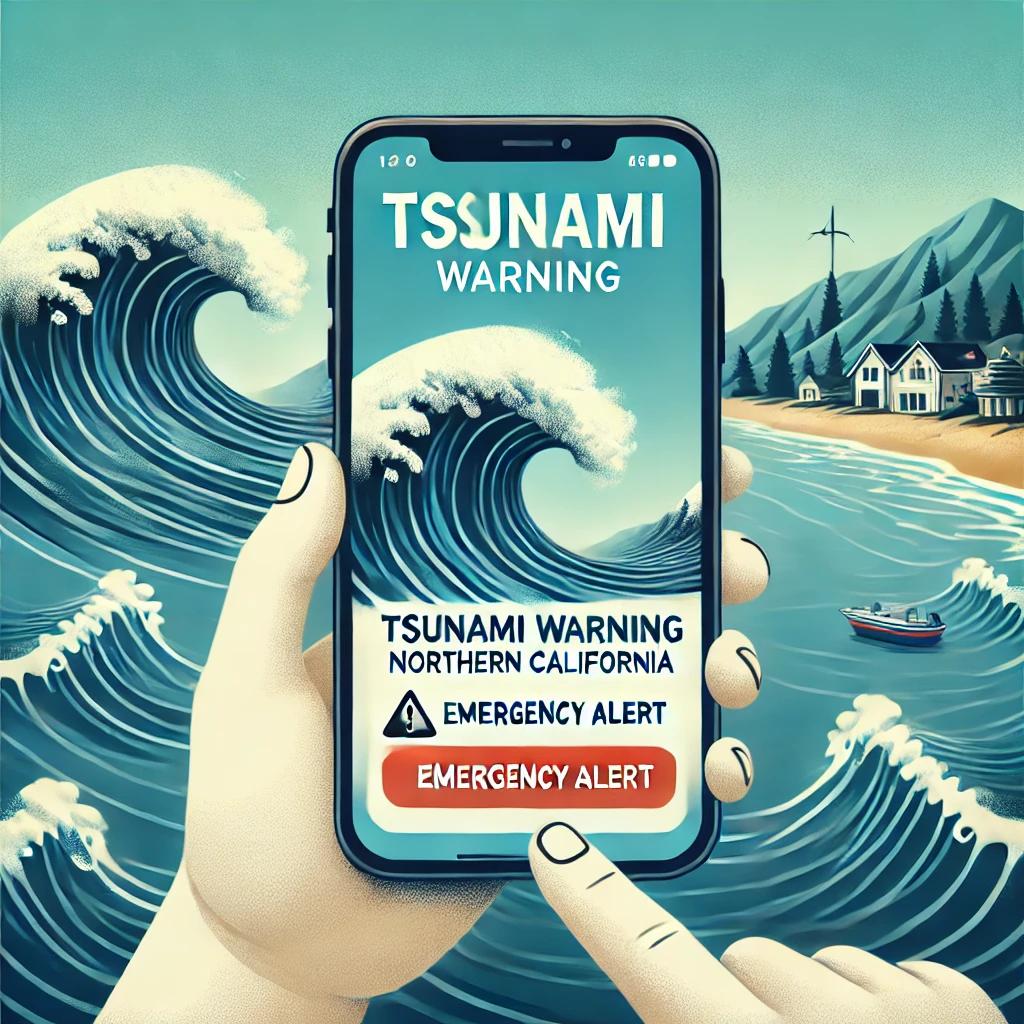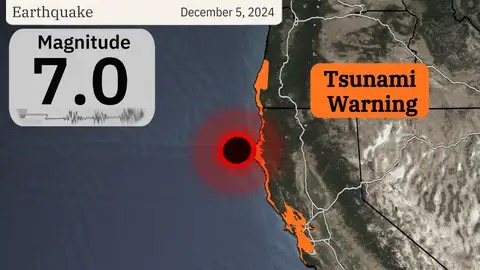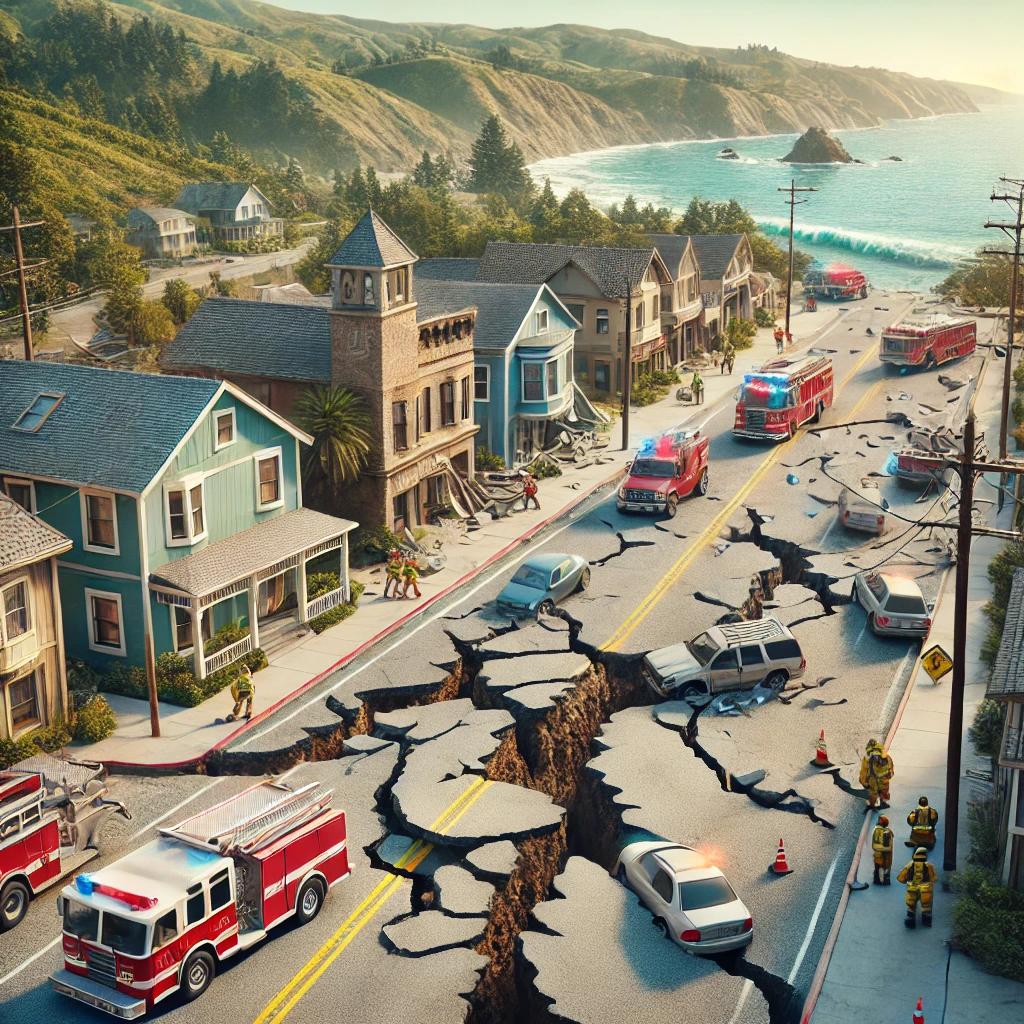Today, a powerful 7.0-magnitude earthquake shook Northern California, leaving residents and authorities on high alert. Furthermore, the quake was followed by nine aftershocks and a tsunami warning, compounding the concerns in affected areas. Below is a detailed breakdown of the event and its aftermath.
Where and When Did the Earthquake Occur?
The earthquake hit at 10:44 a.m. PST, about 45 miles southwest of Eureka near Ferndale, at a depth of eight miles. Additionally, tremors were reported across Northern California, with some reaching as far south as San Francisco. As a result, many communities were left reeling from the unexpected event.
Immediate Impact of the Earthquake
Disruptions Across Northern California
First and foremost, services like Bay Area Rapid Transit (BART) were significantly disrupted. For example, trains were halted, particularly through the underwater tunnel connecting San Francisco and Oakland. Likewise, other organizations responded quickly. For instance, the San Francisco Zoo evacuated visitors, secured animals, and moved staff to safer areas.
Widespread Panic and Property Damage
Meanwhile, residents across the region experienced intense shaking. Reports described items falling off shelves and minor structural damage in certain areas. As a precaution, emergency services remained on high alert, though no major injuries or fatalities have been confirmed.
Aftershocks Add to the Anxiety
Shortly after the main earthquake, nine aftershocks were recorded, with magnitudes ranging from 2.5 to 4.0. These additional tremors, unfortunately, intensified the fear among locals. As a result, many people chose to remain outdoors, concerned about potential structural collapses.
Tsunami Warning Issued
Areas Under Threat
In the wake of the earthquake, the National Tsunami Warning Center issued a tsunami warning for parts of the West Coast. Specifically, the warning extended from Florence, Oregon, to Davenport, California, including the entire San Francisco Bay Area. Because of this, coastal residents were advised to evacuate immediately.

Urgent Safety Measures
To ensure public safety, emergency alerts were sent to residents, urging them to move to higher ground or inland. In addition, officials warned of the risks of flooding and dangerous currents. Therefore, adhering to these warnings became a priority for those in affected zones.
How Are Authorities Responding?
Monitoring and Assessments
Authorities have been working diligently to monitor the situation. In fact, they are currently evaluating the damage caused by the earthquake and the subsequent aftershocks. Although the tsunami warning was downgraded, officials are still advising caution.
Safety Advisories
To keep residents safe, local governments have emphasized the following:
- Avoid coastal areas until all warnings are officially lifted.
- Stay updated through trusted sources, such as the National Weather Service.
- Be prepared for additional aftershocks, as they may still occur.
Lessons in Earthquake Preparedness
As events like this remind us, living in earthquake-prone areas requires vigilance. For example, securing heavy furniture and having an emergency kit ready can make a significant difference. Additionally, creating an evacuation plan is crucial for ensuring safety during future disasters.
What’s Next?
Looking ahead, Northern California must remain alert. On the one hand, the earthquake highlights the importance of earthquake preparedness. On the other hand, it emphasizes the need for improved infrastructure to withstand such events. Above all, staying informed and following safety measures can help communities recover and prepare for the future.
Stay Updated
For ongoing updates and official information, consult these reliable sources:
Final Thoughts
In conclusion, today’s earthquake serves as a stark reminder of the risks associated with living in seismic zones. Although the immediate danger may have subsided, preparedness remains key. By staying vigilant and adhering to safety guidelines, residents can protect themselves and their communities from future disasters. Stay safe, California!


